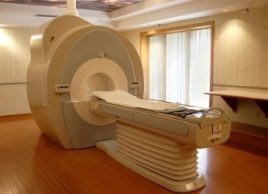Ovarian Cancer
Ovarian cancer is hard to detect because there are no early symptoms, and later ones are vague and can mimic common disorders.

Source: Adapted from Looking After Your Body: An Owner’s Guide to Successful Aging, Reader’s Digest
What is ovarian cancer?
Ovarian cancer develops in one of the ovaries, the almond-size egg-producing reproductive organs on either side of the uterus. When a woman ovulates, an egg bursts through the wall of the ovary. To repair the hole, ovarian cells must divide and reproduce. As in all cancers, when cell division gets out of control, a tumour forms.
In about 70 percent of cases, ovarian cancer is not diagnosed until it has spread to other parts of the body. At that stage, survival rates are between 20 and 25 percent. Women who are treated before the cancer has spread have an 85 to 90 percent chance of cure.
Unfortunately, there’s no foolproof screening test for ovarian cancer. In the later stages, your doctor can feel a tumour during a pelvic exam or see it on an ultrasound. She may remove a tiny sample of cells to check them for cancer under the microscope.
Who is at risk for ovarian cancer?
Most cases of ovarian cancer occur in women over 50. Your risk is higher if a close relative has had ovarian cancer or if you have the BRCA1 gene (which also influences breast cancer risk). If you have the gene, you have about a 45 percent chance of getting ovarian cancer; women without the gene have a two percent lifetime risk.
What Is Your Risk for Ovarian Cancer?
What you can’t control:
- Age. Risk increases with age. The average ovarian cancer patient is 61.
- Family history. Most cases occur in women without a family history of the disease, but if you have a close relative with ovarian cancer, your risk nearly triples.
- Disease history. If you’ve had breast cancer, you’re more susceptible to ovarian cancer.
- Ethnicity. You are at higher risk if you are of Western European or Jewish descent and also have a family history of breast cancer.
What you can control:
- Previous surgery. Having had a tubal ligation or hysterectomy during your reproductive years lowers your risk. Removal of the ovaries lowers risk but does not eliminate it, since cancer can still form in the cells that line the pelvic cavity where the ovaries were located.
- Medications. Hormone replacement therapy seems to increase risk for ovarian cancer in post-menopausal women.
- Reproductive history. Anything that prevents a woman from ovulating seems to protect against ovarian cancer. Taking birth control pills during your reproductive years reduces the risk because the drugs stop ovulation. A woman who takes the pill for 10 years cuts her risk by 70 percent. Each time a woman bears a child, her risk drops by 10 percent. Breast-feeding offers protection as well.
Treatment for ovarian cancer
Treatment depends on the cancer’s spread, as well as your overall health.
Medications for ovarian cancer
New combinations of anticancer drugs have improved survival rates. For many years, the standard treatment was cisplatin (Platinol-AQ) and cyclophosphamide (Cytoxan). But in 1995 trials showed that cisplatin and a new drug, paclitaxel (Taxol), improved the survival rate among women with advanced ovarian cancer.
Prevention of ovarian cancer
- Eat cancer smart. See Cancer for more details.
- See your doctor. Although there is no screening test that reliably detects ovarian cancer, reduce your risk by having an annual pelvic exam and Pap smear. If ovarian cancer runs in your family, have a yearly ultrasound scan of your ovaries. Also, ask your doctor about the CA125 blood test to screen for ovarian cancer. It’s not a foolproof predictor, but it may be worthwhile.
- Medical measures. If you are at high risk, ask your doctor about removing your ovaries, which provides some protection against ovarian cancer.
- Rethink hormones. If you are at risk for ovarian cancer, ask your doctor about any additional risks associated with hormone replacement therapy.
- Aspirin a day? Aspirin shows promise in preventing ovarian cancer. Ask your doctor about taking a dose of 80 to 325 mg daily.




